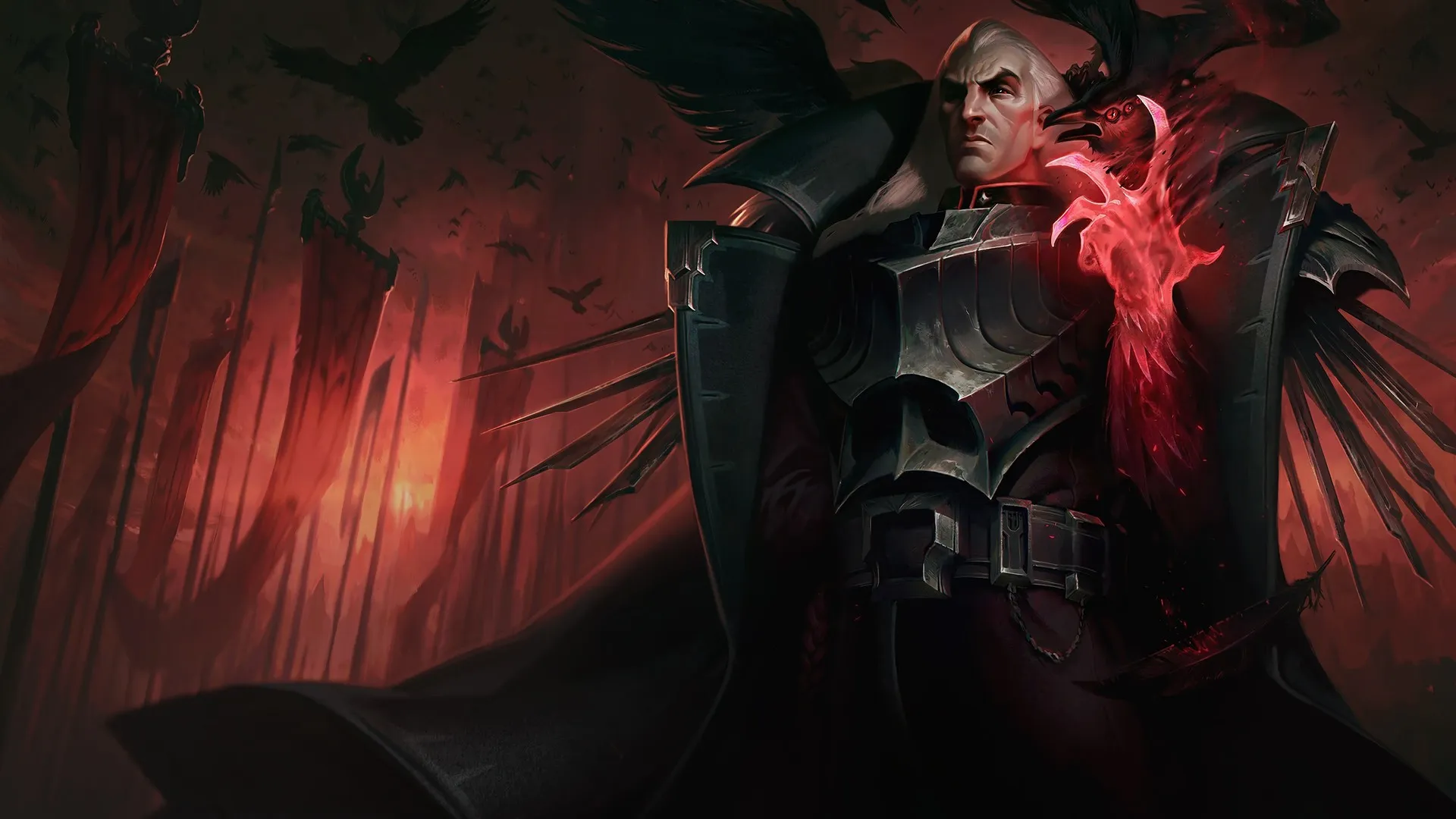
TFT Set 13 Guide: How to Play Form Swapper
The Form Swapper trait in TFT Set 13 introduces an innovative mechanic, allowing players to adapt their champions’ roles based on positioning. This trait provides exceptional flexibility, enabling units to either tank damage or enhance their attack potential depending on where they are placed on the battlefield. When positioned in the front two rows, Form Swappers gain increased durability, with damage reduction scaling between 15% and 30% based on the trait level. In contrast, placing them in the back two rows amplifies their damage output, increasing damage dealt by 20% to 40%.
This dual functionality makes Form Swappers an incredibly versatile addition to any team composition. Whether you need a sturdy frontline to soak up enemy attacks or a devastating backline to dish out heavy damage, Form Swappers can fill either role. In this guide, we’ll break down the mechanics of the Form Swapper trait and show you how to maximize their potential in TFT Set 13. Let’s dive in!
How TFT Form Swapper Works

The Form Swapper trait in TFT Set 13 adds a strategic layer to team composition by allowing players to dynamically adjust their champions’ roles based on positioning. Unlike Shapeshifters that transform during combat, Form Swappers adapt their stats and abilities before the fight begins, depending on their placement on the board. This gives you the freedom to tailor their roles to meet your team’s needs—whether it’s creating a durable frontline or amplifying damage from the backline.
Form Swapper Trait Bonus
Champions: Gangplank (3g), Swain (3g), Elise (4g), Jayce (5g)
Innate Bonus:
• Frontline Form Swappers gain increased durability, benefiting from damage reduction.
• Backline Form Swappers amplify their damage output, increasing their overall impact.
Trait Levels:
• (2): 15% Damage Reduction (DR) or 20% Damage Amplification (DA)
• (4): 30% Damage Reduction (DR) or 40% Damage Amplification (DA)
Form Swapper Synergy
Form Swappers thrive on adaptability, shifting their strengths based on positioning. Placing them in the front rows equips them with higher durability, making them effective tanks to protect your squishier units. Conversely, placing them in the back rows turns them into potent damage-dealers, allowing them to dish out amplified attacks from a safer distance.
This dual role makes Form Swappers invaluable in various team compositions. Whether you need a strong frontline to soak up hits or a powerful backline to deal massive damage, these units can seamlessly transition to fit your strategy. As the meta evolves, the versatility of Form Swappers may lean toward favoring certain setups, but their inherent adaptability ensures they’ll remain impactful in many scenarios.
Key Takeaway
The Form Swapper trait rewards players who can effectively assess their team’s needs and position units strategically. Whether you’re countering an opponent’s comp or optimizing your team’s output, the ability to toggle between defensive and offensive roles gives you a unique tactical advantage. With smart placement and synergy utilization, Form Swappers can become the backbone of a highly versatile and resilient team.
TFT Form Swapper Champions
Gangplank (3g) – Scrap + Form Swapper + Pit Fighter
Gangplank’s ability allows him to cleanse negative effects, heal himself, and unleash a powerful strike in a line, making him an excellent melee tank when positioned in the front rows. Alternatively, if you want him to focus on damage output, placing him in the backline will amplify his offensive capabilities.
His Pit Fighter trait provides Omnivamp, adding sustain to his kit and making him more durable in prolonged fights. This flexibility allows Gangplank to shift between a bruiser frontline role or a damage-focused backline presence based on your team’s needs.
Swain (3g) – Conqueror + Form Swapper + Sorcerer
Swain remains true to his classic role in TFT with his transformative ability, dealing damage to nearby enemies while healing himself. This ability lends itself naturally to a frontline tank role, where Swain can absorb hits and sustain himself in combat.
However, his Sorcerer trait increases his damage potential, allowing him to be positioned in the backline for a more offensive role. Given the lack of tanky units in the Sorcerer trait, Swain’s best use is often as a durable frontline champion, but his adaptability ensures he remains a strong pick regardless of placement.
Elise (4g) – Black Rose + Form Swapper + Bruiser
Elise excels as a premium crowd-control unit, using her ability to unleash a powerful stun in a large AoE. Her Bruiser trait enhances her durability, making her a natural fit for a frontline role where she can disrupt enemies and absorb damage.
However, both the Black Rose and Bruiser traits already have solid frontline options, which opens the door for Elise to be used in a backline damage role. While her crowd control makes her ideal as a frontline disabler, her versatility allows her to adapt to your team’s needs.
Jayce (5g) – Academy + Form Swapper
Jayce brings a unique multi-faceted ability to the battlefield. His “Hextech Forge” grants nearby allies a shield, which can be destroyed but will regenerate with 1% health. Additionally, his active ability knocks an enemy through a gate and back, dealing AoE damage along the way.
Jayce’s flexibility is further enhanced by his ranged ability, which likely delivers a powerful energy blast to deal significant damage. His combination of utility, shielding, and damage makes him a valuable unit whether placed in the frontline to shield allies or the backline to maximize his damage output.
Best TFT Form Swapper Augments
Augments like Form Swapper Crest and Crown are always solid choices, offering the ability to add additional Form Swappers to your team and enhancing your flexibility in team composition. However, there are other notable augments to keep an eye on that can elevate the potential of this trait even further.
Some augments synergize particularly well with Form Swapper units due to their unique dual-role capabilities. Augments that boost damage output or durability align seamlessly with the positional flexibility of Form Swappers, allowing them to excel in either frontline or backline roles.
For example, item-related augments that grant increased tankiness for front-row units or enhance damage for back-row units can significantly amplify the effectiveness of the Form Swapper trait. Similarly, augments that reduce ability cooldowns or boost mana regeneration can help Form Swappers cast their abilities more frequently, taking full advantage of their trait bonuses.
As the meta develops and the set is fully tested, expect to see creative augment combinations that capitalize on the adaptability of Form Swappers. These augments will likely focus on enhancing both the strategic positioning and dynamic potential of this trait, giving players even more room to experiment with team builds. Keep an eye out for updates as the most impactful augment strategies emerge!
Conclusion
The Form Swapper trait in TFT Set 13 introduces a refreshing layer of strategy, offering unparalleled adaptability in how your champions perform during combat. By strategically positioning your units, you can seamlessly switch between tank-focused durability and damage amplification, tailoring your lineup to counter various opponents. This unique mechanic allows players to pivot their strategies mid-game, creating opportunities to optimize their team composition in exciting and unpredictable ways.
With versatile champions like Gangplank, Swain, Elise, and Jayce, the Form Swapper trait shines in both the early and late game, providing valuable flexibility to fill gaps in your lineup. Whether you need a frontline to soak damage or a backline to dish out high DPS, Form Swappers can adapt to your needs.
Mastering Form Swapper means understanding your team’s strengths and weaknesses and making smart adjustments to positioning. This dynamic trait rewards quick thinking and creative builds, making it an excellent choice for players who thrive on adaptability. With the right positioning and synergy, Form Swappers can become a pivotal element of your winning TFT strategy.
Posted On: November 17th, 2024
Recent Articles
💬 Need help?
Our 1v9 support team is available 24/7 to help you with any questions or issues you may have.
support@1v9.gg
Loading...
1v9.gg is not endorsed or affiliated by any game developers or publishers.
2025 1v9, All Rights Reserved, Created By NightDev







